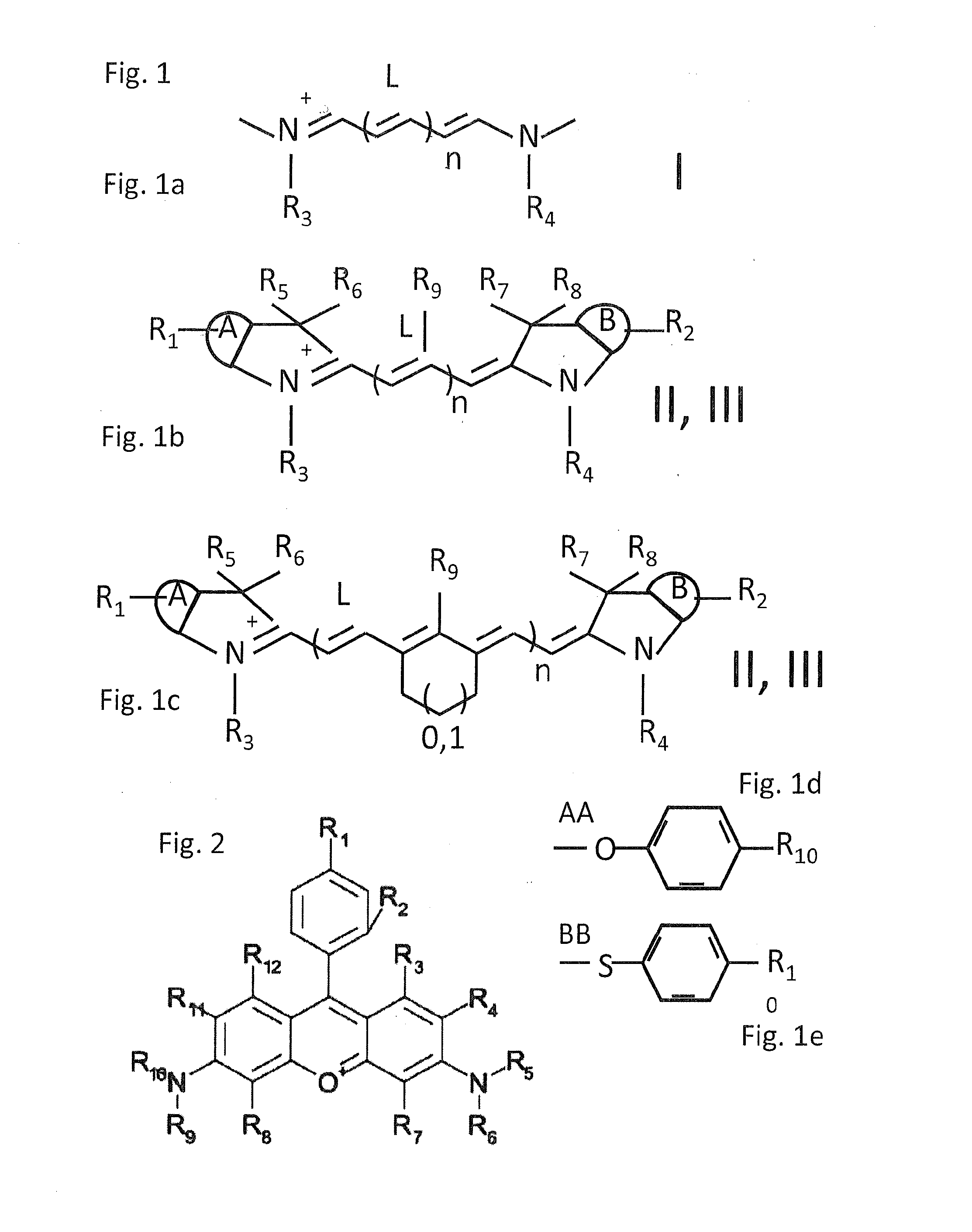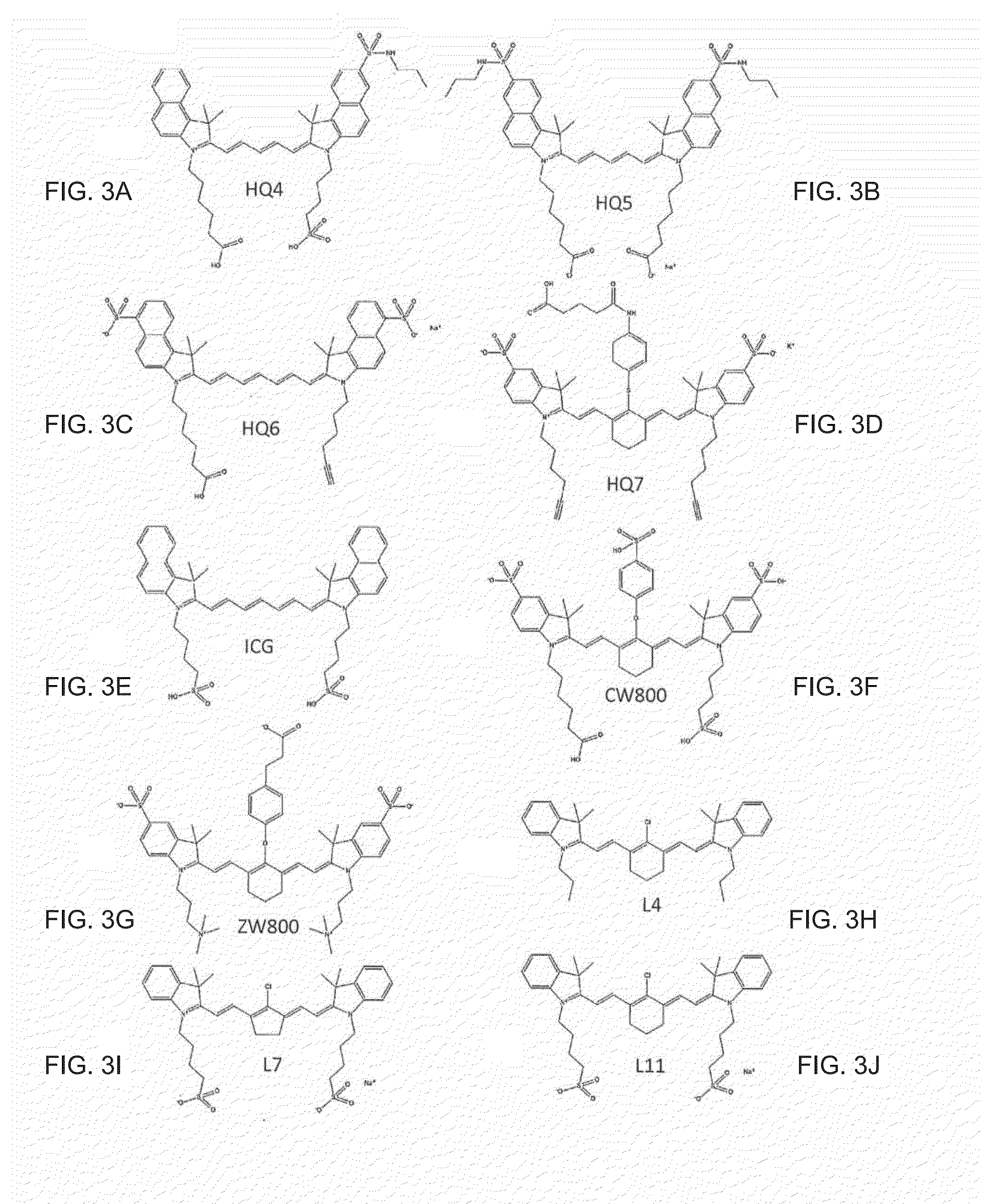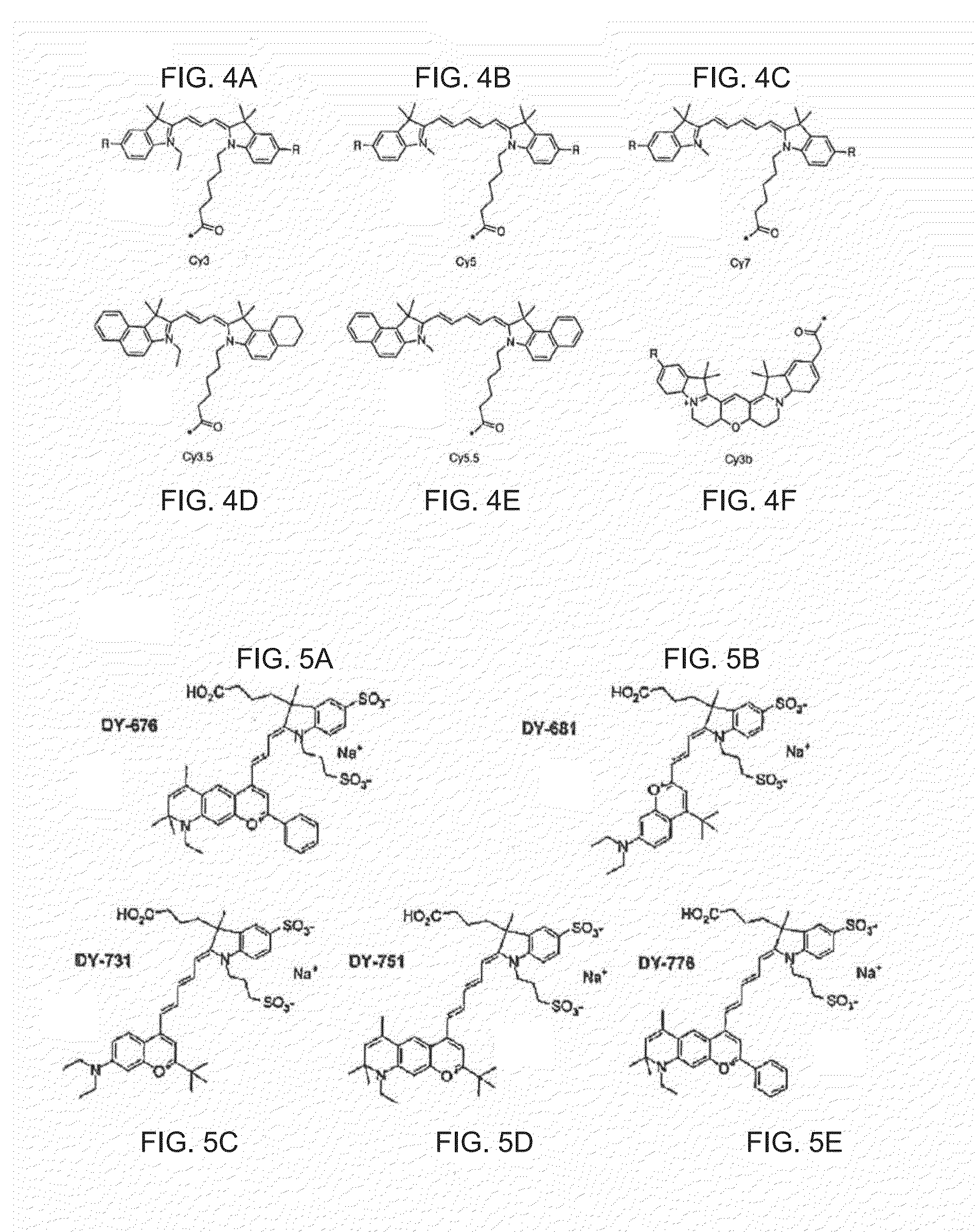Groundbreaking Platform Technology for Specific Binding to Necrotic Cells
a platform technology and specific binding technology, applied in the field of specific binding to necrotic cells, can solve the problems of inability to penetrate necrotic tissue, inconvenient use, and inapplicability of prior art methods and methods involving targeting dead cells, so as to save crucial time during cancer treatment, effective targeting and/or safety, and the effect of sufficient stability
- Summary
- Abstract
- Description
- Claims
- Application Information
AI Technical Summary
Benefits of technology
Problems solved by technology
Method used
Image
Examples
example 1
With Reference to FIG. 12
[0139]PLGA NP Preparation.
[0140]PLGA NPs with entrapped near-infrared fluorescently labeled was prepared using an o / w emulsion and solvent evaporation-extraction method. In brief, 90 ing of PLGA in 3 mL of DCM containing the near-infrared (NIR) 700 nm (680R from LI-COR) (3 mg) was added drop-wise to 25 mL of aqueous 2% (w / v) PVA in distilled water and emulsified for 90 seconds using a sonicator (Branson, sonofier 250). A combination of lipids (DSPE-PEG(2000) amine (8 mg) and mPEG 2000 PE (8 mg)) were dissolved in DCM and added to the vial. The DCM was removed by a stream of nitrogen gas. Subsequently, the emulsion was rapidly added to the vial containing the lipids and the solution was homogenized during 30 seconds using a sonicator. Following overnight evaporation of the solvent at 4° C., the PLGA NPs were collected by ultracentrifugation at 6000 g for 30 min, washed three times with distilled water and lyophilized.
[0141]Conjugating CW800-NHS to the PLGA NP...
example 2
With Reference to FIG. 13
[0145]Synthesis of DTPA-PEG-NH2.
[0146]DTPA containing PEG amine link (4,7,10-Trioxa-1,13-tridecanediamine, indicated as PEG-NH2 in the formula (DTPA-PEG-NH2) was synthesised on Cl-TrtCl resin. Thus, Fmoc-PEG amine was incorporated on Cl-TrtCl resin (CTC resin) by reacting 3 eq. Fmoc-PEG amine in presence of 6 eq. DIEA in DCM during overnight at room temperature. Final loading was measured by Fmoc quantification: value obtained was around 0.8 mmol / g. Fmoc group removal was carried out with piperidine-DMF (1:5) (1×1 min, 2×10 min). Next, the DTPA-(tetra-tBu ester)-COOH (2 eq.) was coupled using DIPCDI (2 eq.) and HOBt (2 eq.) in DMF during overnight. After coupling overnight the ninhydrin test was negative. Later on, DTPA-(tetra-tBu ester)-CO—NH-PEG-CTC-resin cleavage and deprotection was performed in two steps. DTPA-(tetra-tBu ester)-CO—NH-PEG-CTC-resin was treated with 1% TFA in DCM for 10 times for 1 min each time. Excess DCM was removed using vacuum and si...
example 3
With Reference to FIG. 14
[0147]Synthesis of DTPA-CO—NH-PEG-NH2-HQ4.
[0148]HQ4-NHS (8.3×10−4 mmol, 1 mg) dissolved in 50 μL of DMSO was added to DTPA-CO—NH-PEG-NH2 (2.8×10−3 mmol, 2 mg) dissolved in 200 μL of DMSO containing 5 μL DIEA and stirred overnight at room temperature. Later on, the complex DTPA-CO—NH-PEG-HQ4 was purified by RP-HPLC. The desired Dota-PG-HQ5 was 50.5% in yield with a purity of 98% as analysed by HPLC (tR 5.34). HPLC-MS, m / z calc.: 1331.59 for C66H90N8O17S2. Found: 1332.0 [M+1]+ and MALDI-TOF Found 1331.9 [M+1]+ 1353.9 [M+Na].
[0149]Further Examples of systems according to the invention are shown in FIGS. 15-19.
[0150]FIGS. 15a and 15b—variants of Click A-HQ4-DTPA
Click A=2-cyanobenzothiazole
Vehicle=Diethylenetriaminepentaacetic acid (DTPA)
[0151]FIG. 16—ClickA-ZW800-DTPA
Click A=2-cyanobenzothiazole
Vehicle=Diethylenetriaminepentaacetic acid (DTPA)
[0152]FIGS. 17a and 17b—variants of ClickA-ZW800-NOTA
Click A=2-cyanobenzothiazole
Vehicle=2,2,2-(1,4,7-triazanonane-1,4,7-...
PUM
| Property | Measurement | Unit |
|---|---|---|
| Volume | aaaaa | aaaaa |
| Cell death | aaaaa | aaaaa |
| Weight | aaaaa | aaaaa |
Abstract
Description
Claims
Application Information
 Login to View More
Login to View More - R&D
- Intellectual Property
- Life Sciences
- Materials
- Tech Scout
- Unparalleled Data Quality
- Higher Quality Content
- 60% Fewer Hallucinations
Browse by: Latest US Patents, China's latest patents, Technical Efficacy Thesaurus, Application Domain, Technology Topic, Popular Technical Reports.
© 2025 PatSnap. All rights reserved.Legal|Privacy policy|Modern Slavery Act Transparency Statement|Sitemap|About US| Contact US: help@patsnap.com



